Free Like a Bird – Creating Free from Expectations
This week, I write about my personality type based on Thomas Erikson’s book Surrounded by Idiots and how to paint free from expectations.
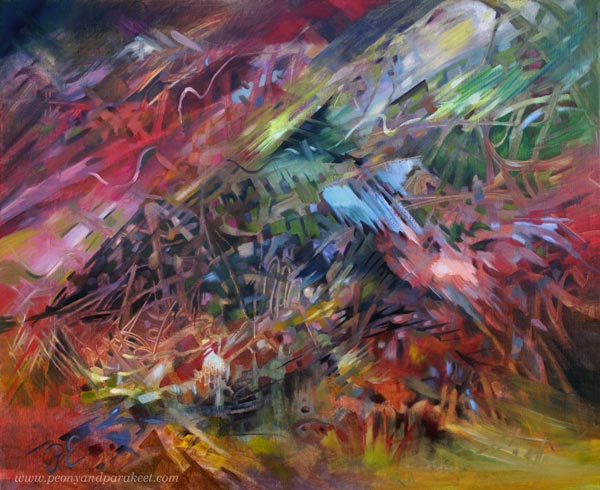
Here’s my newest painting. When finishing it, I became surprised gladly when “Blackbird” got a little sister “Finch.” Here’s Blackbird again:
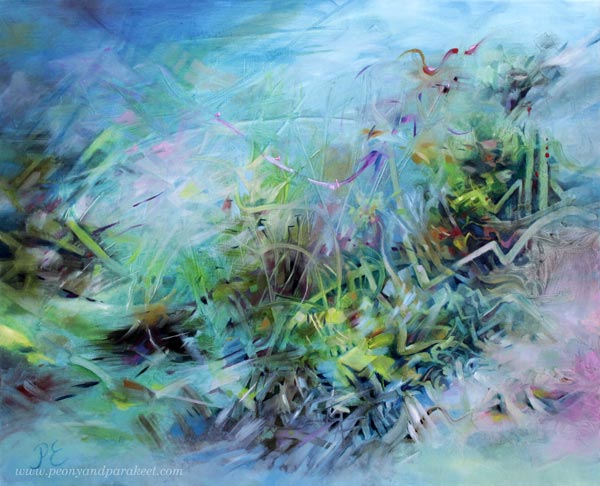
Book: Surrounded by Idiots – The Four Types of Human Behaviour
All my life, I have had strong opinions about how and what I should paint. And yes, these opinions have not been something like “powerful dreams” but more like pushy commands. I didn’t even realize how pushy they have been until I read Thomas Erikson’s book “Surrounded by Idiots.” It made me think about my personality from a new perspective.
Even if the idea of the book – dividing personalities into four categories and naming them by colors – could be taken as nonsense, after reading it, I can’t help thinking about how “red” I am. An ambitious fact-oriented person who has pushed herself to the utmost limit with this art-making obsession.
If you are “yellow,” you probably think that I should either have fun or move on. “Greens” might recommend taking a rest and stopping working too hard. And “Blues” claim that the book is not scientifically proved and there’s no reason to quit.
But I have discovered a new solution. It’s been a joy to use my red energy only to make sure that I keep painting. When I open the tubes, my redness is gone. I am open to painting anything. Every ugly start feels like an invitation to the jungle: Let’s see what’s going on in the inner world.
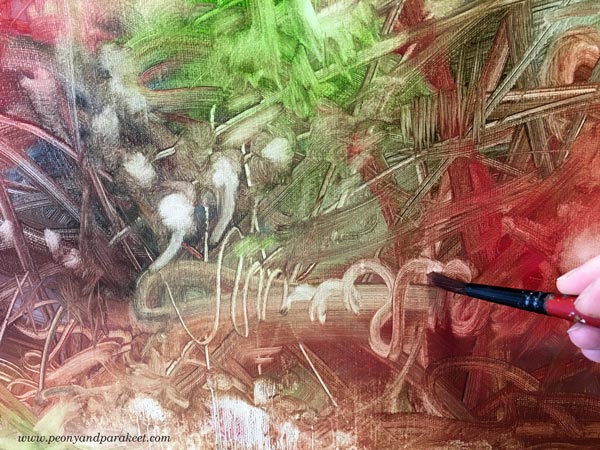
Breaking the Glass – Growing Compassion Towards Inanimate Things
In the class Floral Freedom, you dive deep into Wassily Kandinsky’s ideas about abstract art. Among other things, he talks about breaking the glass – stopping being the observer and starting to be the one that experiences things. Now when I have been pushing myself for almost seven years, the glass has become thin. I feel joy about how easily it breaks right after squeezing the paint on the palette.
For a red person, it has been difficult to break through. I have been giving orders and tightened the control from time to time. But now, the only goal for the spring is to paint all the canvases that I purchased earlier this year. Not questioning what I paint, but just do it.
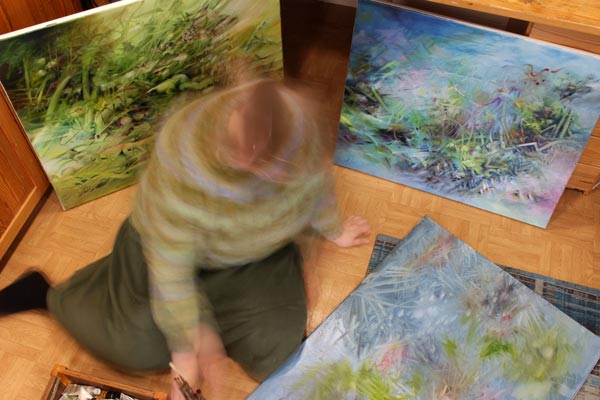
“Do it!” the red in me commands matter-of-factly and then leaves me working. After breaking the glass, I arrive at a lobby that’s filled with all kinds of stuff. For example, there are tulips that my husband removed from the bench where they were not supposed to grow.
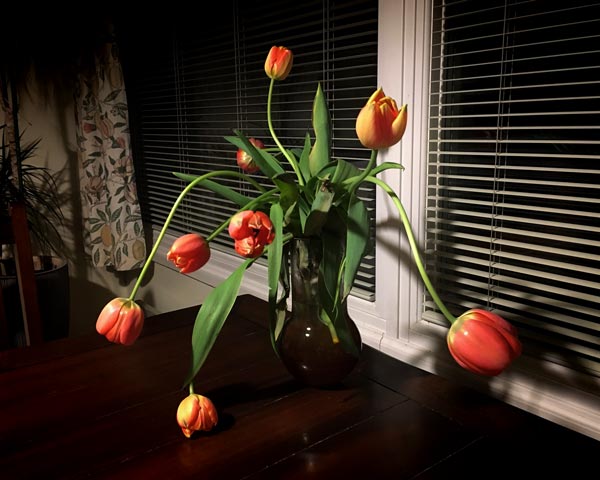
They twisted and turned in the vase, like wild animals in a cage, trying to break free. And when they withered, they became angry and devastated beasts, desperate to continue their lives. They didn’t want to face the fact that they wouldn’t reproduce like they were born to do.
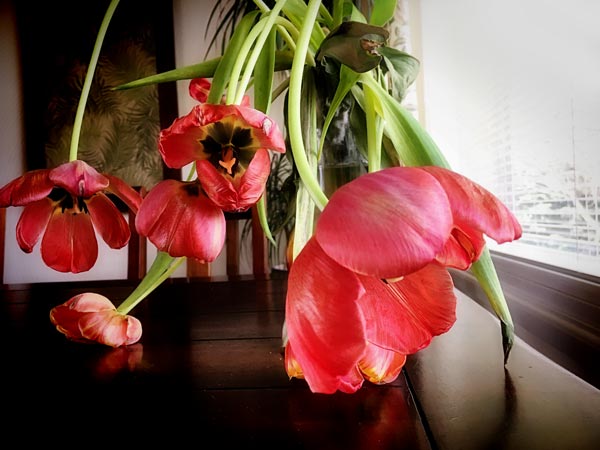
When painting, we can see similar things or just glide on the glass and bypass them. Shapes that don’t get the place in the spotlight. Lines that disappear before they reach high enough.
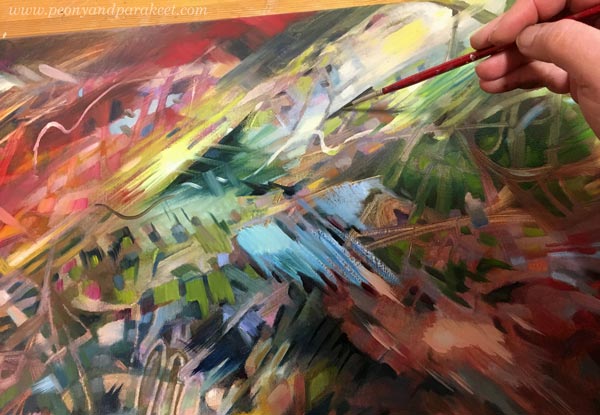
But if we put our mind into noticing them, we can make these inanimate splotches of paint breath and fly, even save some ugly spots. Not because we would hasten and thus compromise the quality, but because we feel sudden compassion towards their character.
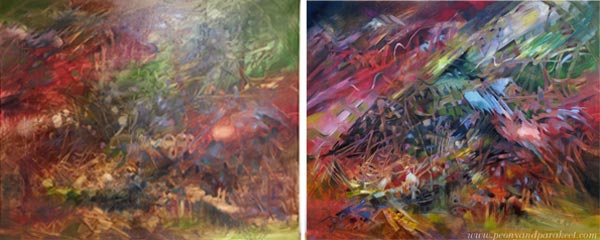
Then a picture is not forced but appears naturally. However, the result is not static or exact like the observer would want. Instead, it describes the inner experience of being.
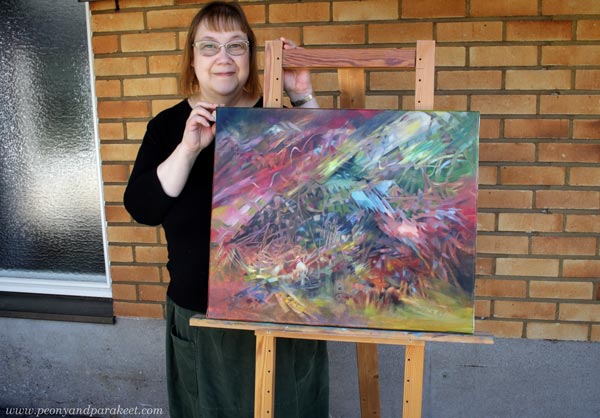
The Experience of Being a Finch
In this painting, the being is a little bird, facing danger, trying to take care of its nest, flying and falling, still living the summer of her life.
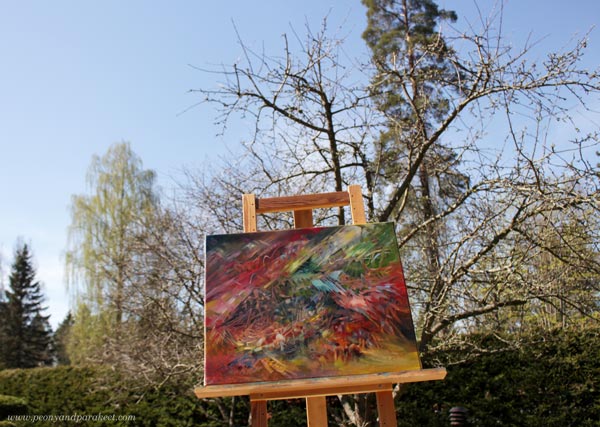
Have you read Thomas Erikson’s book Surrounded by Idiots? Do you see a connection between your personality and art-making?
Pros and Cons of Becoming an Artist
This week, I share my newest painting, and thoughts about a life change after becoming an artist – even if I don’t quite know where I will be heading next myself.

All my life I have wanted to be an artist. But first, I went to study software engineering because it was a much more sensible thing to do at a young age. And I loved computers. How can a girl love machines so much?
There’s this girl in me who looks in the future and gets excited about technology. And then there’s another girl who looks back to history and wants to paint like Rubens or Kandinsky.
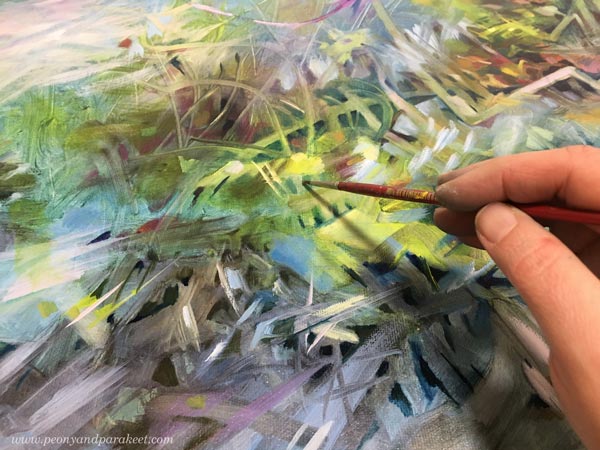
Pursuing the Dream of Becoming an Artist
After I got my degree in 1996, I repeated to myself “Paivi, you are a master of science – “diplomi-insinööri” for a couple of years. It felt so unbelievable!
But I had this other dream that I wanted to pursue, and it felt like my life would be too short for that. So many years were given to technology. However, in 2014, about seven years ago, I decided to give it a go.
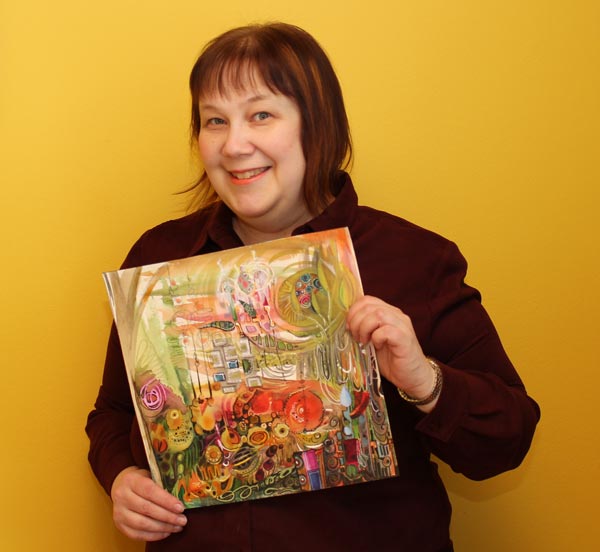
Every day since then I have banged my head against the wall between the outer and inner world. I have learned to draw freely, get intuitive with watercolors, illustrate animals and magical fantasies, and paint flowers and abstracts.
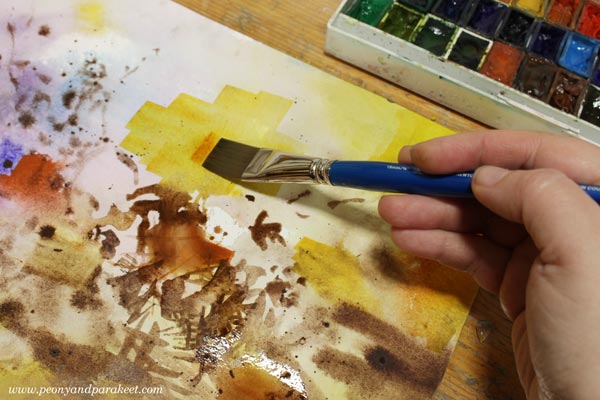
I thought that I would be learning and teaching for the rest of my life, never coming home, but fully enjoying the journey.
Breaking Through in Becoming an Artist
However, this year, I found myself breaking through, seeing a new horizon. I had to really push myself to give finishing touches to my newest class Floral Freedom, and after reading Wassily Kandinsky’s book “Point and Line to Plane” the final small pieces fell in their places. It was like a big equation in an engineer’s mind became solved, and I found myself whispering: “Paivi, you are an artist.”
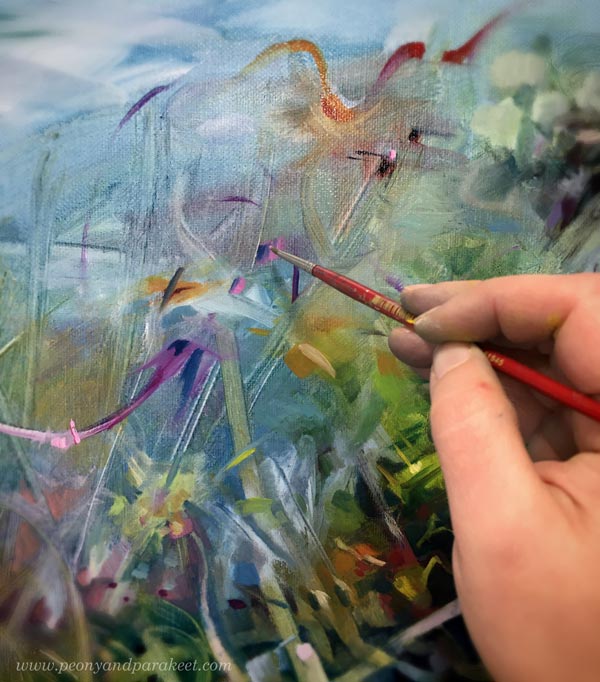
And similarly, as after graduating in 1996, the achievement felt unbelievable. But this time, its tone was different. It was not a validation received from others but from myself and thus, felt more holistic and life-changing. Yes, I may have been an artist for others for some time already, but finally, I have become an artist in the eyes of myself. It has made me want to put recent paintings side by side and continue the series boldly and unapologetically.
There’s also unexpected sadness in this happiness. The imaginary world that I have been building for the last years has fully opened, but with that, something has closed too. The old routines are gone. I no longer question what I should create in terms of subject or style. All I have to do is to fill a palette and start painting.
I am still unaware of what’s coming next. How to sustain myself. How to live after solving a puzzle that has been in my head for 53 years.
Blackbird in a New Territory

Every morning when I open the door, I see blackbirds in our front garden. They seem modest and hard-working. They rarely rest, and when they sing, it seems to be for a purpose. These colorless birds don’t ever surprise or make my head spin.
But yesterday, I noticed that a blackbird had left the garden and entered my inner world. And it was so delightful, like a sign of hope in all the unawareness and misery that I have had recently. Isn’t it amazing that someone so insignificant as a blackbird can reach a soul, even secretly? That someone so plain and muddy can shine so brightly when it lands in another territory!
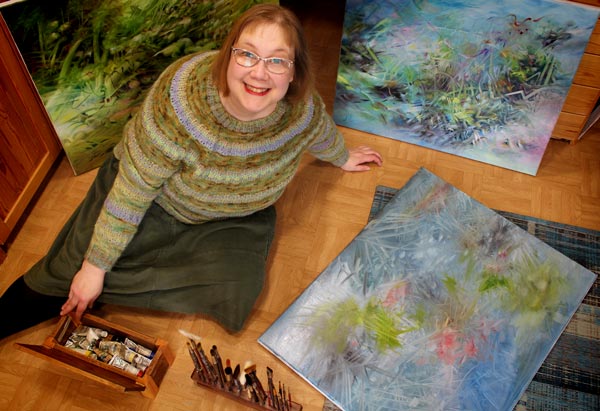
I hope you’ll stick with me, take my classes,
and hop in where ever you are in your artist’s journey.
I promise to stay around and help you as a teacher and a coach
at least for the rest of this year.
The Job of a Studio Dog
This post is written by Cosmo, the best studio dog ever.
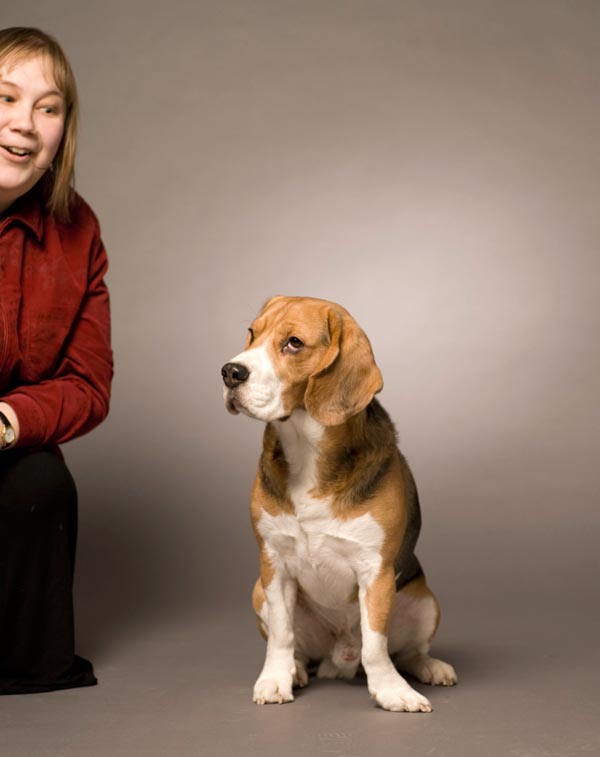
A studio dog is a position in an artistic family. In short, the job is to maintain the artist’s mental and physical health. This happens by interrupting the artist regularly, but not too often, to get exercise, process inspiration, and stay grounded.
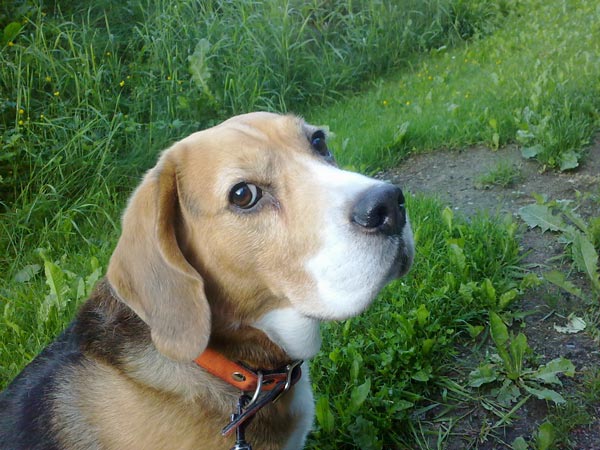
Artists often criticize themselves too much, so it’s essential to love them unconditionally. Whatever they create, they are always worth to get noticed and appreciated. It’s not the job of a dog to decide whether the art is good or bad but to value their temperament and overall creative personality.
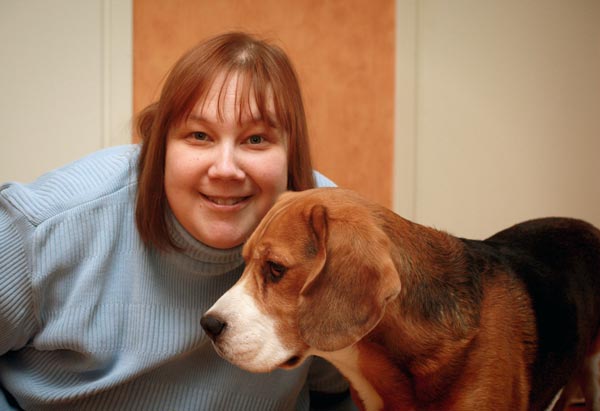
Encouraging the artist to take breaks is not always easy. A regular schedule for interruptions is recommended. Sometimes the artist can get annoyed, but it’s good to remember that art is like pig ears. It’s easy to develop an addiction to them. Dogs can’t live with pig ears only, and artists can’t survive by only making art.
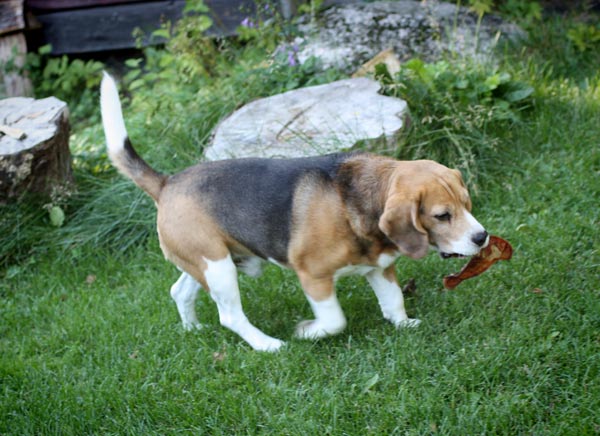
When walking the artist, it’s helpful to understand that eyes are her nose. She needs to stop and take pictures once in a while, and these sights are not always what a dog would appreciate.
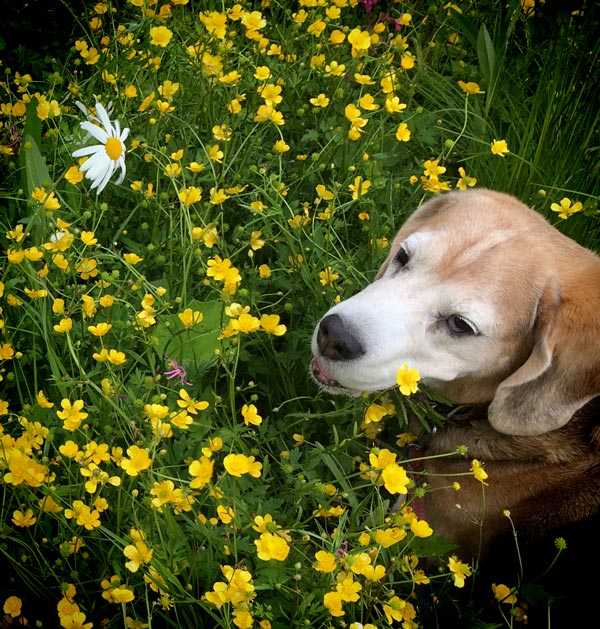
Creating art is lonely. The artist may want to be alone, but there’s also a limit. Just lying on the studio’s floor can keep her company.
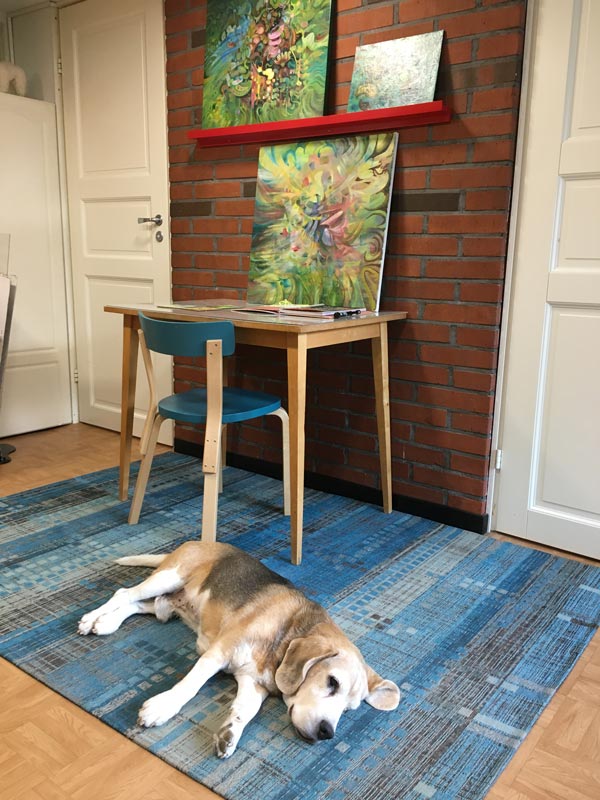
The hardest part of the job is to understand how the internet works. The artist wants to share pictures and stories like this, so sometimes studio dogs also end up on the internet. No matter how old you are, it’s your job to look cute and approachable. It helps if you are not entirely black or white and if you have lop ears. And when the artist is browsing the internet, that’s some kind of a pig ear too.
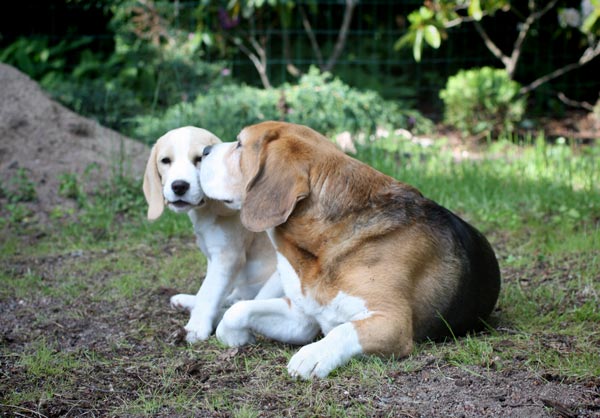
The job of a studio dog is a job for life. You don’t leave the artist until you have to. At the age of 15 and a half, it’s now time to say goodbye and pass the position to my assistant Stella. She is much cuter than I am, and I’m pretty sure she will handle other things as well. I do have trained her for over eight years.
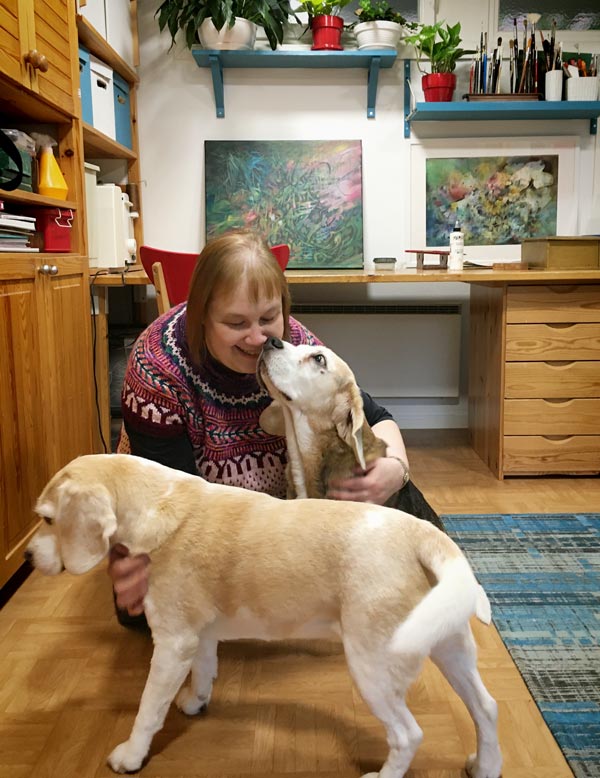
Lematja’s Heathcliff, “Cosmo”, 23.3.2005 – 18.9.2020. Our hearts are broken, it was so hard to let him go.
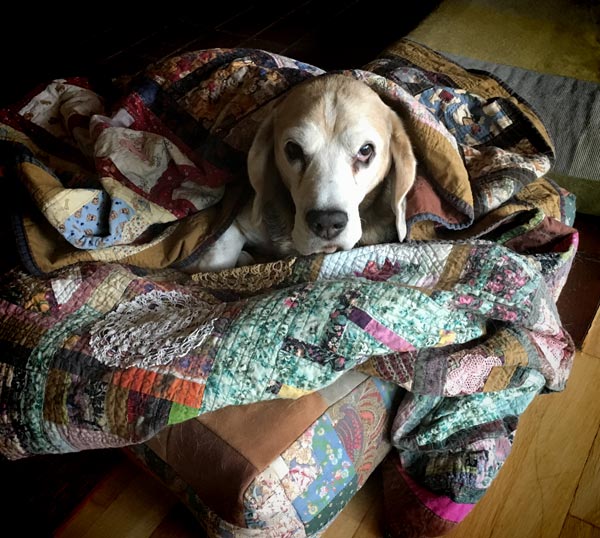
Making of a Miniature Painting
This week, I have a new miniature painting and share tips for making small-sized paintings in general.
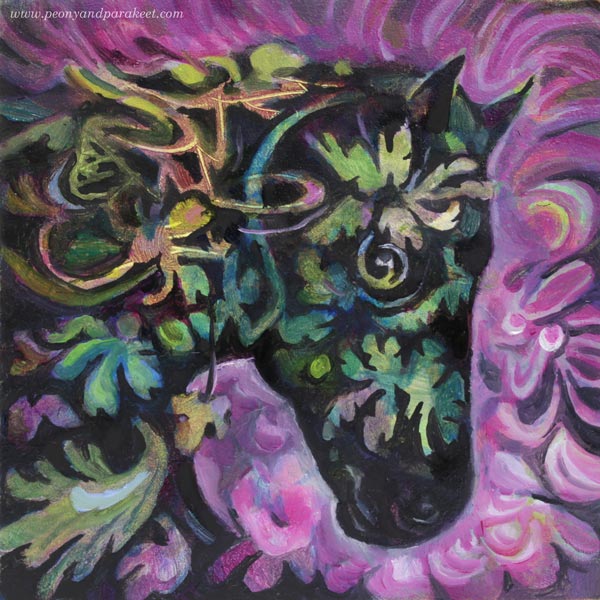
Let me introduce Ebony, my newest miniature painting! It’s only 10 cm x 10 cm (4 inches x 4 inches). The size shows better in the photo below.
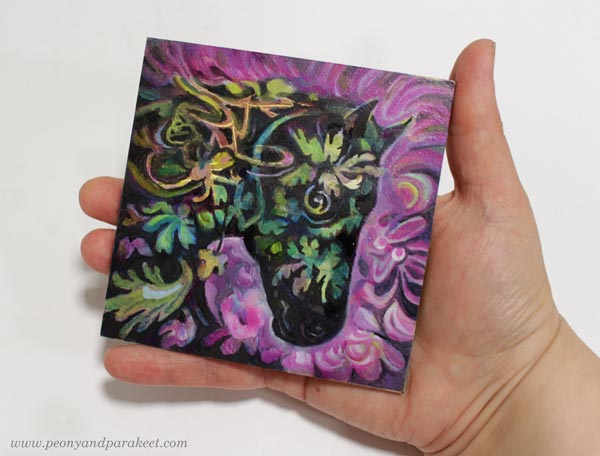
This is an oil painting, and it took over a month from start to finish, but just because I let each layer dry properly. There’s about a week drying time between each layer. If you use acrylic paints or watercolors, the process is much quicker!
The Beginning – Making Not So Beautiful Mess
As usual, I didn’t have any particular idea for the painting when I started. Here’s how the painting looked after a couple of layers.
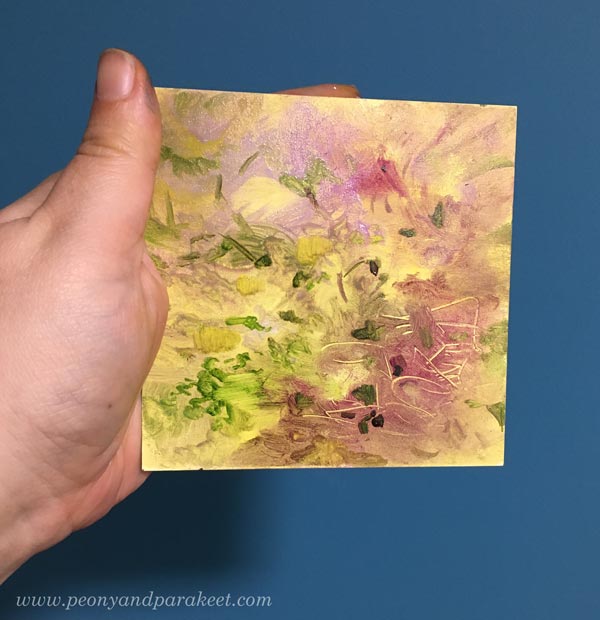
My surface here is Ampersand Gessoboard Panel. It’s very smooth and thus suitable for small details. I had bought a pack of four over a year ago. I finished the first one last year, see this blog post!
When making an abstract mess, I don’t usually settle for pretty little messes, but make the mess more layered. When the mess is as ugly as I can bare, it begins to talk to me. It came to my mind, that the random strokes could be mane, and there could be a horse coming up.
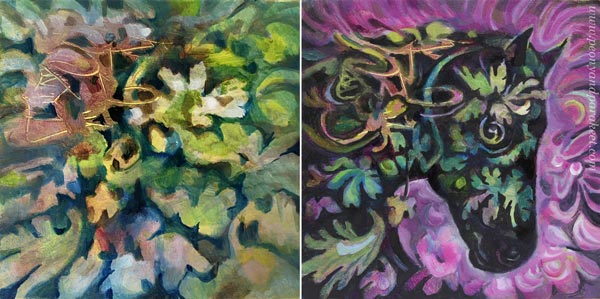
Using Negative Painting to Dig Out the Spirit
I like to use negative painting a lot. So here, I painted the background first so that it defined the head of the horse. When painting the surroundings, you slowly get closer to the actual spirit. It’s like taming a wild animal!
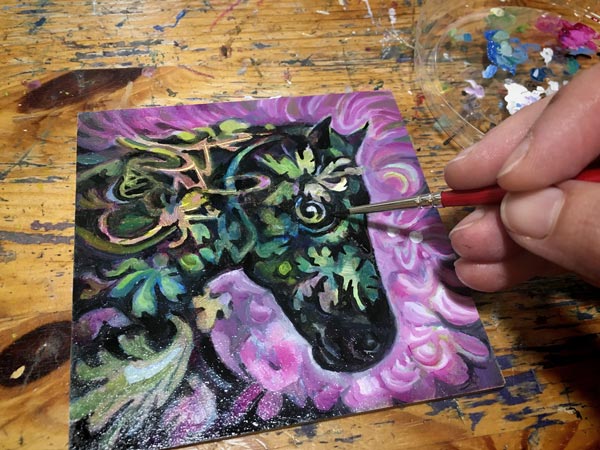
Ebony is now a gentle soul, and she reminds me of Black Beauty, the television series in the 1970s. I watched every episode and it inspired me to play with plastic horses.
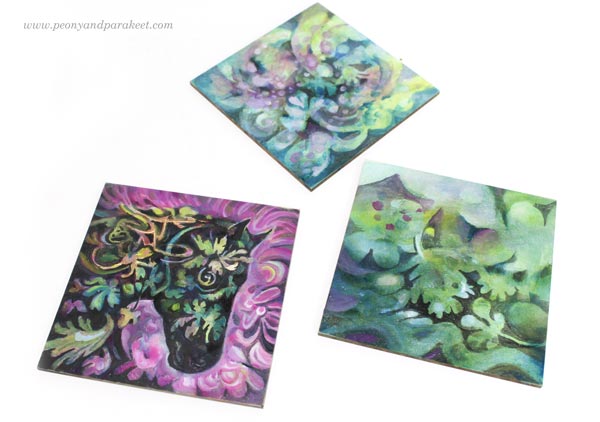
I still have two more panels to finish. I think I will dig out horses or other animals from their messes so that I get a small series of miniature paintings.
My Four Tips for Painting in Miniature
- Start boldly and enjoy all kinds of mark-making and color play. If you are painting on paper, you can start with a bigger piece, and then cut it into smaller ones.
- Make a few big shapes that contain smaller ones. In my painting, the horse is one big shape, the background another. Let smaller shapes break the borders of the bigger shapes so that the image doesn’t look stiff.
- The negative painting technique where you paint the surroundings of the shape enables you to paint delicate shapes easily. Magical Forest is the class to take for mastering this technique!
- We hold miniature pieces quite close when looking at them, so the quality of brushwork matters. Use thin paint, small brushes and even magnifiers if needed. Taking photos and zooming them helps to see the details too. Decodashery is the class to take for making the best out of every stroke!
Drawing Small

Of course, your miniature artwork doesn’t have to be a painting, but a drawing! For me, drawing has been in a significant role in becoming a better painter. It can be just free drawing like in Inspirational Drawing, or more intentional practice like in Animal Inkdom and Magical Inkdom. I use both approaches in painting too.
I hope you enjoyed this week’s project. Do you like painting or drawing in small size?